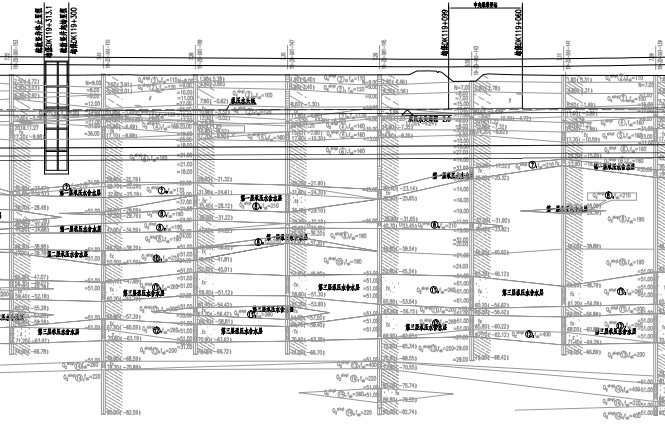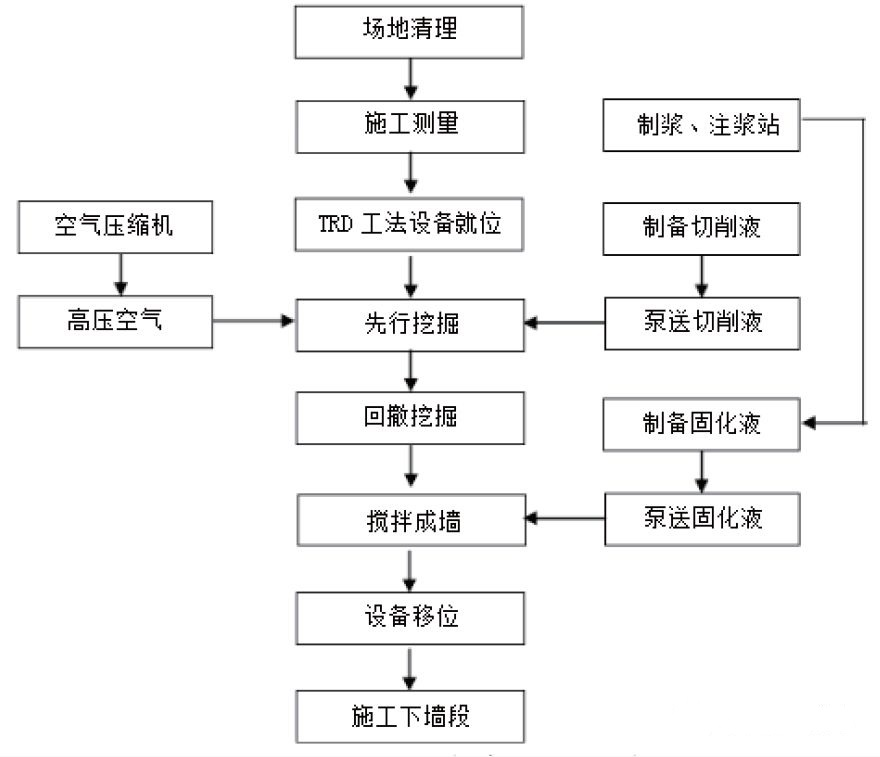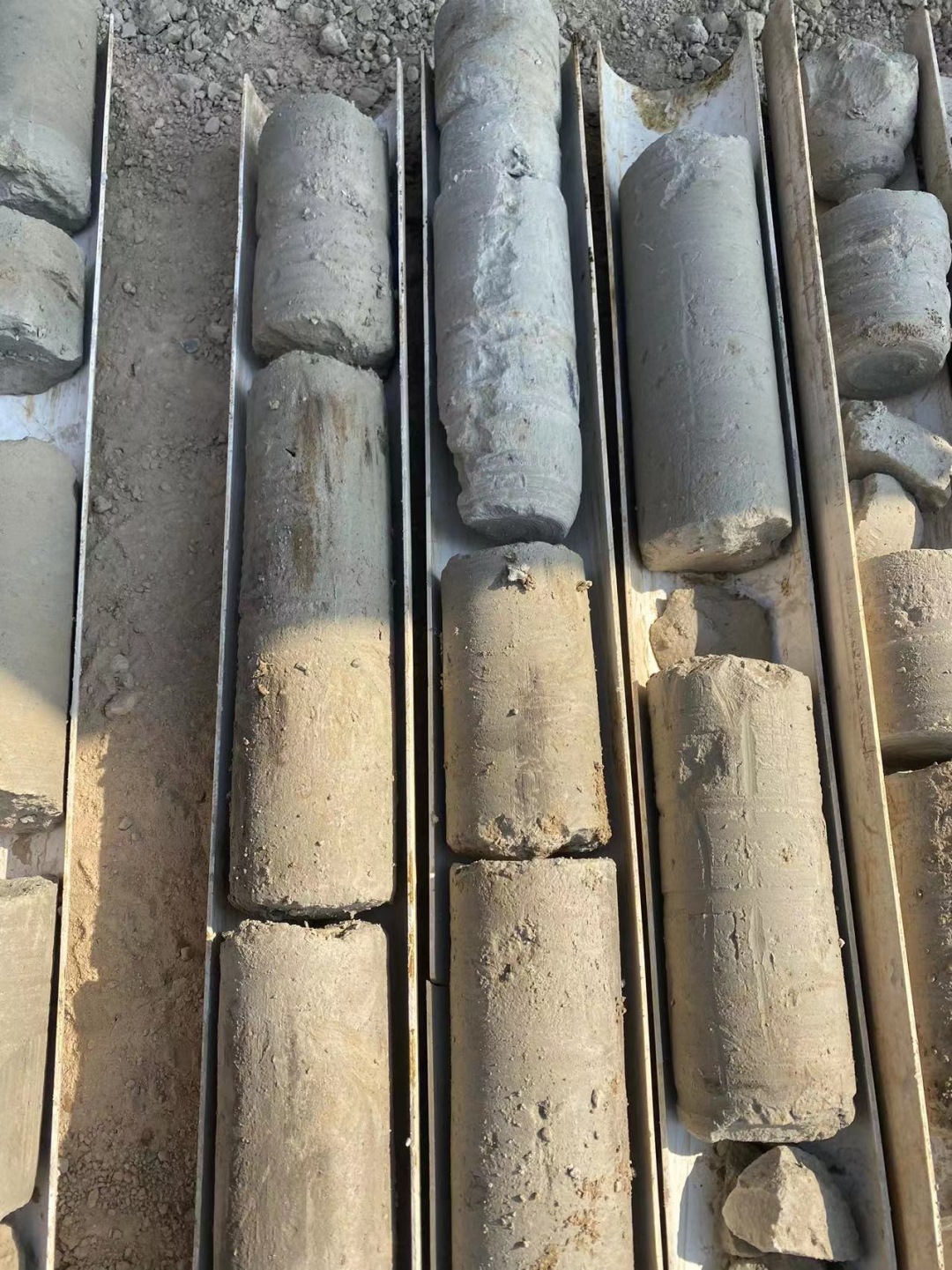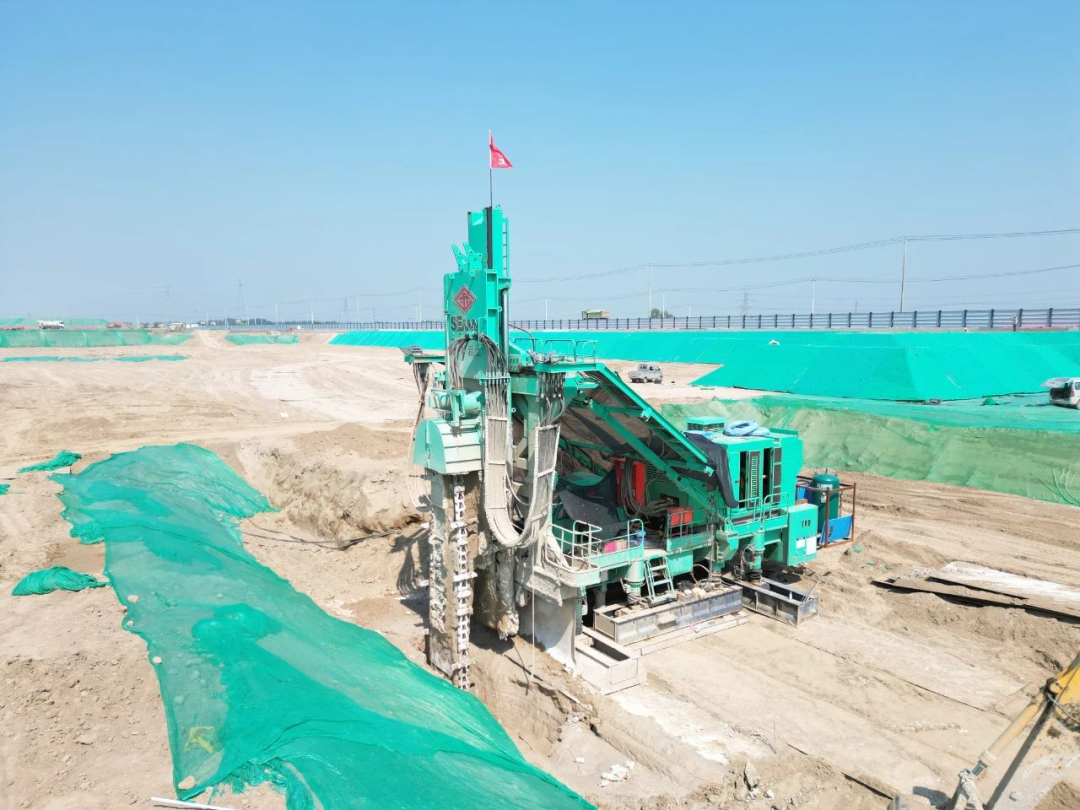In recent years, TRD construction method has been more and more widely used in China, and its application in airports, water conservancy, railways and other infrastructure projects is also increasing. Here, we will discuss the key points of TRD construction technology using the Xiongan Tunnel in the underground section of Xiongan New Area of Xiongan Xin High-speed Railway as the background. And its applicability in the northern region. The experimental results show that the TRD construction method has good wall quality and high construction efficiency, which can fully meet the construction requirements. The large-scale application of the TRD construction method in this project also proves the applicability of the TRD construction method in the northern region. , providing more references for TRD construction in the northern region.
1. Project Overview
The Xiongan-Xinjiang High-speed Railway is located in the central part of North China, running in Hebei and Shanxi provinces. It runs roughly in an east-west direction. The line starts from Xiongan Station in Xiongan New District in the east and ends at Xinzhou West Station of Daxi Railway in the west. It passes through Xiongan New District, Baoding City, and Xinzhou City. , and is connected to Taiyuan, the capital of Shanxi Province, via the Daxi Passenger Express. The length of the newly built main line is 342.661km. It is an important horizontal channel for the high-speed rail transportation network in the "four vertical and two horizontal" areas of Xiongan New Area, and is also the "Medium and Long-term Railway Network Plan" The "Eight Vertical and Eight Horizontal" high-speed railway main channel is an important part of the Beijing-Kunming Corridor, and its construction is of great significance to improving the road network.

There are many design bid sections in this project. Here we take bid section 1 as an example to discuss the application of TRD construction. The construction scope of this bid section is the entrance of the new Xiongan Tunnel (Section 1) located in Gaoxiaowang Village, Rongcheng County, Baoding City. The line starts from It passes through the center of the village. After leaving the village, it goes down through Baigou to lead the river, and then extends from the south side of Guocun to the west. The western end is connected to the Xiongan Intercity Station. The starting and ending mileage of the tunnel is Xiongbao DK119+800 ~ Xiongbao DK123+050. The tunnel is located in Baoding The city is 3160m in Rongcheng County and 4340m in Anxin County.
2. Overview of TRD design
In this project, the cement-soil mixing wall of equal thickness has a wall depth of 26m~44m, a wall thickness of 800mm, and a total square meter volume of approximately 650,000 square meters.
The cement-soil mixing wall of equal thickness is made of P.O42.5 ordinary Portland cement, the cement content is not less than 25%, and the water-cement ratio is 1.0~1.5.
The wall verticality deviation of the cement-soil mixing wall of equal thickness shall not be greater than 1/300, the wall position deviation shall not be greater than +20mm~-50mm (the deviation into the pit is positive), the wall depth deviation shall not be greater than 50mm, and the wall thickness shall not be less than the designed Wall thickness, the deviation is controlled at 0~-20mm (control the size deviation of the cutting box blade).
The standard value of the unconfined compressive strength of the cement-soil mixing wall of equal thickness after 28 days of core drilling is not less than 0.8MPa, and the wall permeability coefficient is not greater than 10-7cm/s.
The equal-thickness cement-soil mixing wall adopts a three-step wall construction process (i.e., first excavation, retreat excavation, and wall-forming mixing). After the stratum is excavated and loosened, spraying and mixing are then performed to solidify the wall.
After the mixing of the cement-soil mixing wall of equal thickness is completed, the range of the cutting box is sprayed and mixed during the lifting process of the cutting box to ensure that the space occupied by the cutting box is densely filled and effectively reinforced to prevent adverse effects on the trial wall. .
3. Geological conditions
Geological conditions

The exposed strata on the surface of the entire Xiongan New Area and some surrounding areas are Quaternary loose layers. The thickness of Quaternary sediments is generally about 300 meters, and the type of formation is mainly alluvial.
(1) Brand new system (Q₄)
The Holocene floor is generally buried 7 to 12 meters deep and is mainly alluvial deposits. The upper 0.4~8m is newly deposited silty clay, silt, and clay, mostly gray to gray-brown and yellow-brown; the lithology of the lower stratum is general sedimentary silty clay, silt, and clay, with some parts containing fine silty sand and medium layers. The sand layer mostly exists in the shape of a lens, and the color of the soil layer is mostly yellow-brown to brown-yellow.
(2)Update the system (Q₃)
The burial depth of the Upper Pleistocene floor is generally 50 to 60 meters. It is mainly alluvial deposits. The lithology is mainly silty clay, silt, clay, silty fine sand and medium sand. The clay soil is hard to plastic. , the sandy soil is medium-dense to dense, and the soil layer is mostly gray-yellow-brown.
(3) Mid-Pleistocene system (Q₂)
The burial depth of the mid-Pleistocene floor is generally 70 to 100 meters. It is mainly composed of alluvial silty clay, clay, clayey silt, silty fine sand, and medium sand. The clay soil is hard to plastic, and the sandy soil is In a dense form. The soil layer is mostly yellow-brown, brown-yellow, brown-red, and tan.
(4) The maximum eastern knot depth of soil along the line is 0.6m.
(5) Under Category II site conditions, the basic earthquake peak acceleration partition value of the proposed site is 0.20g (degree); the basic earthquake acceleration response spectrum characteristic period partition value is 0.40s.
2. Hydrogeological conditions
The types of groundwater involved in the exploration depth range of this site mainly include phreatic water in the shallow soil layer, slightly confined water in the middle silty soil layer, and confined water in the deep sandy soil layer. According to geological reports, the distribution characteristics of various types of aquifers are as follows:
(1) Surface water
The surface water is mainly from Baigou diversion river (part of the river adjacent to the tunnel is filled by wasteland, farmland and green belt), and there is no water in Pinghe River during the survey period.
(2) Diving
Xiongan Tunnel (Section 1): Distributed near the surface, mainly found in the shallow ②51 layer, ②511 layer, ④21 clay silt layer, ②7 layer, ⑤1 layer of silty fine sand, and ⑤2 medium sand layer. ②7. The silty fine sand layer in ⑤1 and the medium sand layer in ⑤2 have better water-bearing and permeability, large thickness, more even distribution, and rich water content. They are medium to strong water-permeable layers. The top plate of this layer is 1.9~15.5m deep (elevation is 6.96m~-8.25m), and the bottom plate is 7.7~21.6m (elevation is 1.00m~-14.54m). The phreatic aquifer is thick and evenly distributed, which is very important for this project. Construction has a big impact. The groundwater level gradually decreases from east to west, with a seasonal variation of 2.0~4.0m. The stable water level for diving is 3.1~16.3m deep (elevation 3.6~-8.8m). Affected by the infiltration of surface water from the Baigou Diversion River, the surface water recharges the groundwater. The groundwater level is the highest at Baigou Diversion River and its vicinity DK116+000 ~ Xiongbao DK117+600.
(3) Pressurized water
Xiongan Tunnel (Section 1): According to the survey results, the pressure-bearing water is divided into four layers.
The first layer of confined water aquifer consists of ⑦1 fine silty sand, ⑦2 medium sand, and is locally distributed in ⑦51 clayey silt. Based on the distribution characteristics of the aquifer in the underground section of the project, the confined water in this layer is numbered as No. 1 confined aquifer.
The second confined water aquifer consists of ⑧4 fine silty sand, ⑧5 medium sand, and is locally distributed in ⑧21 clayey silt. The confined water in this layer is mainly distributed in Xiongbao DK122+720~Xiongbao DK123+360 and Xiongbao DK123+980~Xiongbao DK127+360. Since the No. 8 sand layer in this section is continuously and stably distributed, the No. 84 sand layer in this section is finely divided. The sand, ⑧5 medium sand, and ⑧21 clayey silt aquifers are separately divided into the second confined aquifer. Based on the distribution characteristics of the aquifer in the underground section of the project, the confined water in this layer is numbered as No. 2 confined aquifer.
The third layer of confined aquifer is mainly composed of ⑨1 silty fine sand, ⑨2 medium sand, ⑩4 silty fine sand, and ⑩5 medium sand, which are locally distributed in local ⑨51.⑨52 and (1021.⑩22 silt. Distribution from the underground section engineering aquifer Characteristics, this layer of confined water is numbered as No. ③ confined aquifer.
The fourth layer of confined aquifer is mainly composed of ①3 fine silty sand, ①4 medium sand, ⑫1 silty fine sand, ⑫2 medium sand, ⑬3 silty fine sand, and ⑬4 medium sand, which are locally distributed in ①21.①22.⑫51.⑫52.⑬21.⑬22 In powdery soil. Based on the distribution characteristics of the aquifer in the underground section of the project, the confined water in this layer is numbered as No. 4 confined aquifer.
Xiongan Tunnel (Section 1): The stable water level elevation of the confined water in the Xiongbao DK117+200~Xiongbao DK118+300 section is 0m; the stable confined water level elevation in the Xiongbao DK118+300~Xiongbao DK119+500 section is -2m ;The stable water level elevation of the pressurized water section from Xiongbao DK119+500 to Xiongbao DK123+050 is -4m.
4. Trial wall test
The water-stop longitudinal silos of this project are controlled according to 300-meter sections. The form of the water-stop curtain is the same as the water-stop curtain on both sides of the adjacent foundation pit. The construction site has many corners and gradual sections, making the construction difficult. It is also the first time that the TRD construction method has been used on such a large scale in the north. Regional application in order to verify the construction capabilities of the TRD construction method and equipment under the stratum conditions, the wall quality of the equal-thickness cement-soil mixing wall, cement mixing uniformity, strength and water-stopping performance, etc., improve various construction parameters, and officially construct Conduct a trial wall test beforehand.
Trial wall design requirements:
The wall thickness is 800mm, the depth is 29m, and the plane length is not less than 22m;
The wall verticality deviation shall not be greater than 1/300, the wall position deviation shall not be greater than +20mm~-50mm (the deviation into the pit is positive), the wall depth deviation shall not be greater than 50mm, the wall thickness shall not be less than the designed wall thickness, and the deviation shall be controlled between 0~ -20mm (control the size deviation of the cutting box head);
The standard value of the unconfined compressive strength of a cement-soil mixing wall of equal thickness after 28 days of core drilling is not less than 0.8MPa, and the wall permeability coefficient should not be greater than 10-7cm/sec;
Construction process:
The equal-thickness cement-soil mixing wall adopts a three-step wall-forming construction process (i.e., advance excavation, retreat excavation, and wall-forming mixing).

The wall thickness of the trial wall is 800mm and the maximum depth is 29m. It is constructed using the TRD-70E construction method machine. During the trial wall process, the equipment operation was relatively normal, and the average wall advancement speed was 2.4m/h.
Test results:

Testing requirements for the trial wall: Since the trial wall is extremely deep, the slurry test block strength test, core sample strength test and permeability test should be carried out promptly after the cement-soil mixing wall of equal thickness is completed.

Slurry test block test:
Unconfined compressive strength tests were conducted on core samples of cement-soil mixing walls of equal thickness during the 28-day and 45-day curing periods. The results are as follows:
According to the testing data, the unconfined compressive strength of the cement-soil mixing wall core samples of equal thickness is greater than 0.8MPa, meeting the design requirements;
Penetration testing:
Conduct permeability coefficient tests on core samples of cement-soil mixing walls of equal thickness during the 28-day and 45-day curing periods. The results are as follows:
According to the testing data, the permeability coefficient results are between 5.2×10-8-9.6×10-8cm/sec, which meets the design requirements;
Formed cement soil compressive strength test:
A 28-day interim compressive strength test was conducted on the test wall slurry test block. The test results were between 1.2MPa-1.6MPa, which met the design requirements;
A 45-day interim compressive strength test was conducted on the test wall slurry test block. The test results were between 1.2MPa-1.6MPa, which met the design requirements.
5. Construction parameters and technical measures
1. Construction parameters
(1) The construction depth of TRD construction method is 26m~44m, and the wall thickness is 800mm.
(2) The excavation liquid is mixed with sodium bentonite, and the water-cement ratio W/B is 20. The slurry is mixed on site with 1000kg of water and 50-200kg of bentonite. During the construction process, the water-cement ratio of the excavation liquid can be adjusted accordingly according to the process requirements and formation characteristics.
(3) The fluidity of the excavation fluid mixed mud should be controlled between 150mm and 280mm.
(4) The excavation fluid is used in the self-driving process of the cutting box and the advance excavation step. In the retreat excavation step, the excavation fluid is appropriately injected according to the fluidity of the mixed mud.
(5) The curing liquid is mixed with P.O42.5 grade ordinary Portland cement, with a cement content of 25% and a water-cement ratio of 1.5. The water-cement ratio should be controlled to a minimum without reducing the amount of cement. ; During the construction process, every 1500kg of water and 1000kg of cement are mixed into the slurry. The curing liquid is used in the wall-forming mixing step and the cutting box lifting step.
2. Key points of technical control
(1) Before construction, accurately calculate the coordinates of the corner points of the center line of the water-stop curtain based on the design drawings and the coordinate reference points provided by the owner, and review the coordinate data; use measuring instruments to set out, and at the same time prepare pile protection and notify relevant units Carry out wiring review.
(2) Before construction, use a level to measure the site elevation, and use an excavator to level the site; bad geology and underground obstacles that affect the quality of the wall formed by the TRD construction method should be dealt with in advance before proceeding with the TRD construction method water-stop curtain construction; at the same time, appropriate measures should be taken Increase cement content.
(3) Local soft and low-lying areas must be backfilled with plain soil in time and compacted layer by layer with an excavator. Before construction, according to the weight of the TRD construction method equipment, reinforcement measures such as laying steel plates should be carried out on the construction site. The laying of steel plates should not be less than 2 The layers are laid parallel and perpendicular to the direction of the trench respectively to ensure that the construction site meets the requirements for the bearing capacity of the mechanical equipment foundation; to ensure the verticality of the pile driver and cutting box.
(4) The construction of cement-soil mixing walls of equal thickness adopts a three-step wall-forming construction method (i.e., excavation first, retreat excavation, and wall-forming mixing). The foundation soil is fully mixed, stirred to loosen, and then solidified and mixed into the wall.
(5) During construction, the chassis of the TRD pile driver should be kept horizontal and the guide rod vertical. Before construction, a measuring instrument should be used to conduct axis testing to ensure that the TRD pile driver is correctly positioned and the vertical deviation of the pile driver column guide frame should be verified. Less than 1/300.
(6) Prepare the number of cutting boxes according to the designed wall depth of the cement-soil mixing wall of equal thickness, and excavate the cutting boxes in sections to drive them to the designed depth.
(7) When the cutting box is driven in by itself, use measuring instruments to correct the verticality of the pile driver guide rod in real time; while ensuring vertical accuracy, control the injection amount of excavation fluid to the minimum so that the mixed mud is in a state of high concentration and high viscosity. in order to cope with drastic stratigraphic changes.
(8) During the construction process, the vertical accuracy of the wall can be managed through the inclinometer installed inside the cutting box. The verticality of the wall should not be greater than 1/300.
(9) After the installation of the inclinometer, proceed with the construction of a cement-soil mixing wall of equal thickness. The wall formed on the same day must overlap the formed wall by no less than 30cm~50cm; the overlapping part must ensure that the cutting box is vertical and not tilted. Stir slowly during construction to fully mix and stir the curing liquid and mixed mud to ensure overlap. quality. The schematic diagram of overlapping construction is as follows:

(11) After the construction of a section of the working face is completed, the cutting box is pulled out and decomposed. The TRD host is used in conjunction with the crawler crane to pull out the cutting box in sequence. The time should be controlled within 4 hours. At the same time, an equal volume of mixed mud is injected at the bottom of the cutting box.
(12) When pulling out the cutting box, negative pressure should not be generated in the hole to cause settlement of the surrounding foundation. The working flow of the grouting pump should be adjusted according to the speed of pulling out the cutting box.
(13) Strengthen the maintenance of equipment. Each shift will focus on checking the power system, chain, and cutting tools. At the same time, a backup generator set will be configured. When the mains power supply is abnormal, pulp supply, air compression, and normal mixing operations can be resumed in a timely manner in the event of a power outage. , to avoid delays causing drilling accidents.
(14) Strengthen the monitoring of the TRD construction process and the quality inspection of the formed walls. If quality problems are found, you should proactively contact the owner, supervisor and design unit so that remedial measures can be taken in a timely manner to avoid unnecessary losses.

6. Conclusion
The total square footage of this project's equal-thickness cement-soil mixing walls is approximately 650,000 square meters. It is currently the project with the largest TRD construction and design volume among domestic high-speed rail tunnel projects. A total of 32 TRD equipment have been invested, of which Shanggong Machinery's TRD series products account for 50%. ; The large-scale application of the TRD construction method in this project shows that when the TRD construction method is used as a water-stop curtain in a high-speed railway tunnel project, the verticality of the wall and the quality of the finished wall are guaranteed, and the equipment capacity and work efficiency can meet the requirements. It also proves that the TRD construction method is effective in The applicability in the northern region has certain reference significance for the TRD construction method in high-speed rail tunnel engineering and construction in the northern region.
Post time: Oct-12-2023

 한국어
한국어